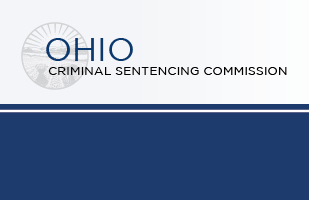New Platform Provides Path to Accessible Sentencing Data

A new data platform will aid Ohio courts in reporting criminal sentencing information as the first step in creating a statewide database.

A new data platform will aid Ohio courts in reporting criminal sentencing information as the first step in creating a statewide database.
The Ohio Criminal Sentencing Commission unveiled a new website to help courts implement a uniform sentencing entry system, which will lead to the development of a statewide criminal sentencing database.
It will be called the Ohio Sentencing Data Platform, or OSDP.
The website is an informational resource for the public and a guide for judges and court staff.
Currently, Ohio doesn’t have a central index that compiles and tracks felony sentencing information, such as the number of people sentenced for a specific felony in a given year.
The implementation of the uniform sentencing entry will establish standardized data for the felony sentencing in all 88 counties and is the first step to providing accessible and searchable information that can help judges make sentencing decisions.
The commission, an affiliated office of the Ohio Supreme Court, routinely brings together stakeholders to analyze and address issues within criminal sentencing.
“The OSDP will empower courts with reliable information, and it will help many others,” said Chief Justice Maureen O’Connor. “Prosecutors can use the data to help them with sentencing recommendations, and defense counsel can use this evidence to compare sentencing recommendations among similarly situated offenders.”
The platform will be able to do two jobs at once by simultaneously generating the sentencing entry for the court and collecting sentencing data. Among the available documents are the Uniform Sentencing Entry and Method of Conviction forms.
Four counties – Allen, Delaware, Hancock, and Lawrence – are piloting the project with three more scheduled to join by the end of the month: Highland, Lake, and Summit.
At least 10 others have held informational meetings or scheduled site visits to also take part in the effort.
Aside from accumulating hard data specific to felony sentencing and outcomes – plea bargains, defendants placed on probation, or people found not guilty – the database will gather supplemental information to allow analysis of sentencing patterns and trends.
Chief Justice O’Connor said the information is meant to provide standardized data points, allowing for the ability to monitor and evaluate results, duplicate successes, and address unintended consequences.
“The improvement in transparency in making such data accessible to practitioners, the public, and researchers would serve as a vehicle to address issues connected with criminal sentencing – bail reform, pretrial detention, access to justice, fair and impartial treatment at trial, and sentencing reform,” she said.


